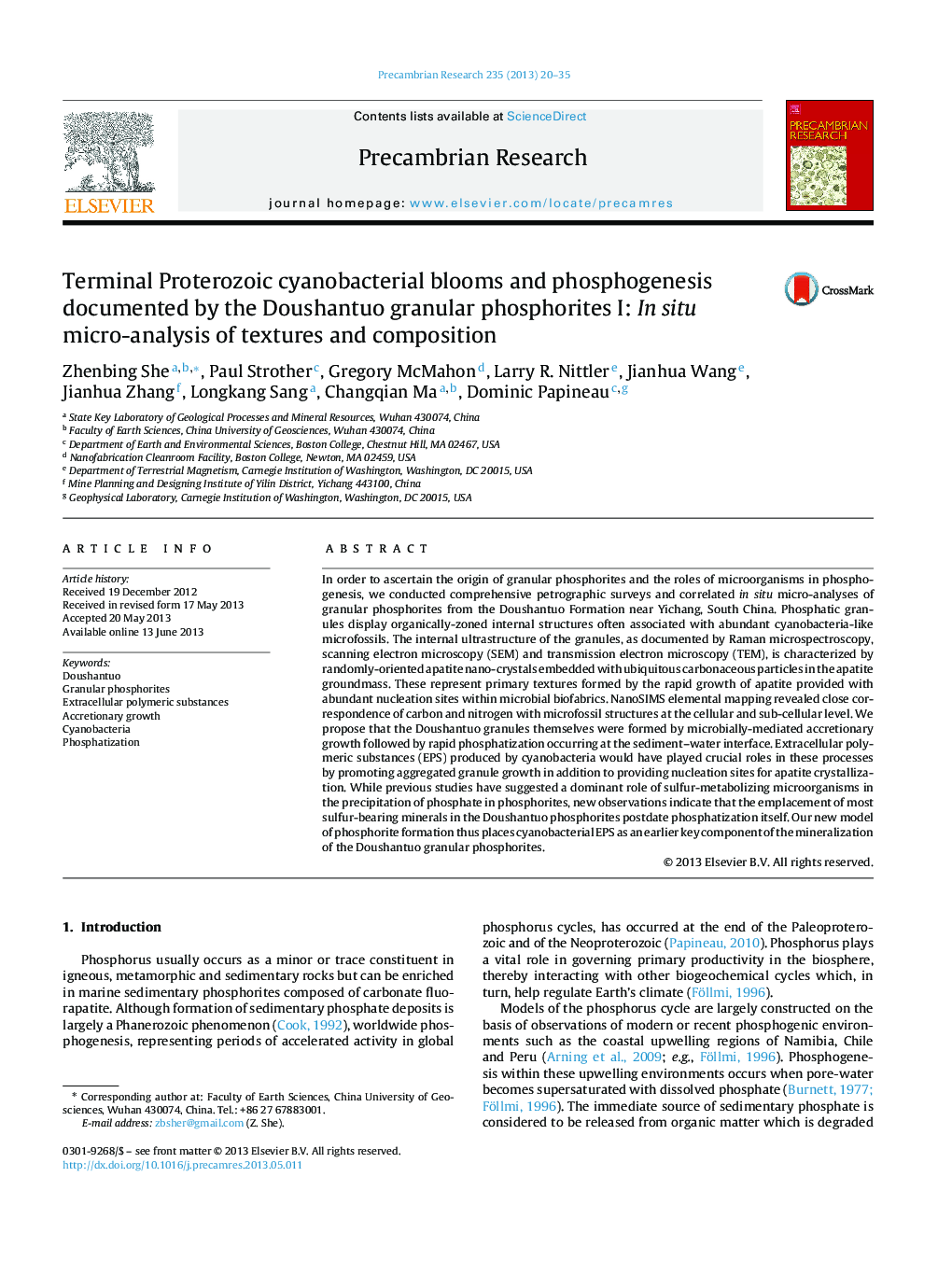| کد مقاله | کد نشریه | سال انتشار | مقاله انگلیسی | نسخه تمام متن |
|---|---|---|---|---|
| 4723140 | 1639639 | 2013 | 16 صفحه PDF | دانلود رایگان |

• Doushantuo phosphatic granules show zoned structures associated with microfossils.
• Disseminated carbonaceous particles are ubiquitous in the granules.
• SEM and TEM revealed randomly-oriented apatite nano-crystals.
• Granules formed by microbially-mediated accretionary growth and phosphatization.
• Extracellular polymeric substances played crucial roles.
In order to ascertain the origin of granular phosphorites and the roles of microorganisms in phosphogenesis, we conducted comprehensive petrographic surveys and correlated in situ micro-analyses of granular phosphorites from the Doushantuo Formation near Yichang, South China. Phosphatic granules display organically-zoned internal structures often associated with abundant cyanobacteria-like microfossils. The internal ultrastructure of the granules, as documented by Raman microspectroscopy, scanning electron microscopy (SEM) and transmission electron microscopy (TEM), is characterized by randomly-oriented apatite nano-crystals embedded with ubiquitous carbonaceous particles in the apatite groundmass. These represent primary textures formed by the rapid growth of apatite provided with abundant nucleation sites within microbial biofabrics. NanoSIMS elemental mapping revealed close correspondence of carbon and nitrogen with microfossil structures at the cellular and sub-cellular level. We propose that the Doushantuo granules themselves were formed by microbially-mediated accretionary growth followed by rapid phosphatization occurring at the sediment–water interface. Extracellular polymeric substances (EPS) produced by cyanobacteria would have played crucial roles in these processes by promoting aggregated granule growth in addition to providing nucleation sites for apatite crystallization. While previous studies have suggested a dominant role of sulfur-metabolizing microorganisms in the precipitation of phosphate in phosphorites, new observations indicate that the emplacement of most sulfur-bearing minerals in the Doushantuo phosphorites postdate phosphatization itself. Our new model of phosphorite formation thus places cyanobacterial EPS as an earlier key component of the mineralization of the Doushantuo granular phosphorites.
Journal: Precambrian Research - Volume 235, September 2013, Pages 20–35